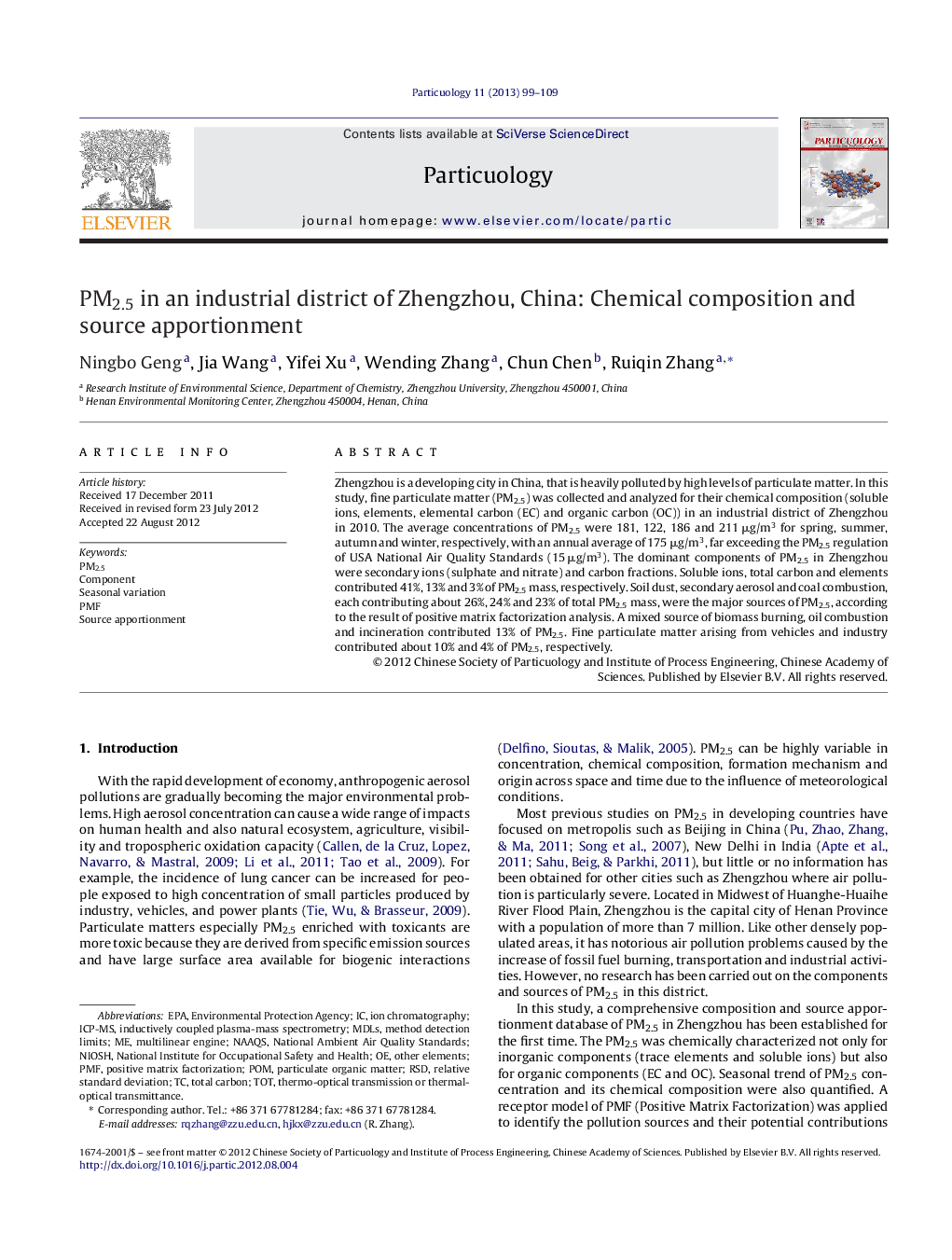| Article ID | Journal | Published Year | Pages | File Type |
|---|---|---|---|---|
| 672051 | Particuology | 2013 | 11 Pages |
Zhengzhou is a developing city in China, that is heavily polluted by high levels of particulate matter. In this study, fine particulate matter (PM2.5) was collected and analyzed for their chemical composition (soluble ions, elements, elemental carbon (EC) and organic carbon (OC)) in an industrial district of Zhengzhou in 2010. The average concentrations of PM2.5 were 181, 122, 186 and 211 μg/m3 for spring, summer, autumn and winter, respectively, with an annual average of 175 μg/m3, far exceeding the PM2.5 regulation of USA National Air Quality Standards (15 μg/m3). The dominant components of PM2.5 in Zhengzhou were secondary ions (sulphate and nitrate) and carbon fractions. Soluble ions, total carbon and elements contributed 41%, 13% and 3% of PM2.5 mass, respectively. Soil dust, secondary aerosol and coal combustion, each contributing about 26%, 24% and 23% of total PM2.5 mass, were the major sources of PM2.5, according to the result of positive matrix factorization analysis. A mixed source of biomass burning, oil combustion and incineration contributed 13% of PM2.5. Fine particulate matter arising from vehicles and industry contributed about 10% and 4% of PM2.5, respectively.
Graphical abstractFigure optionsDownload full-size imageDownload as PowerPoint slideHighlights► Annual average PM2.5 level in Zhengzhou was 175 μg/m3, higher than accepted standard. ► The major sources of PM2.5 were soil dust, secondary aerosol and coal combustion. ► Three main sources contributed respectively 26, 24 and 23% of total PM2.5 mass.
